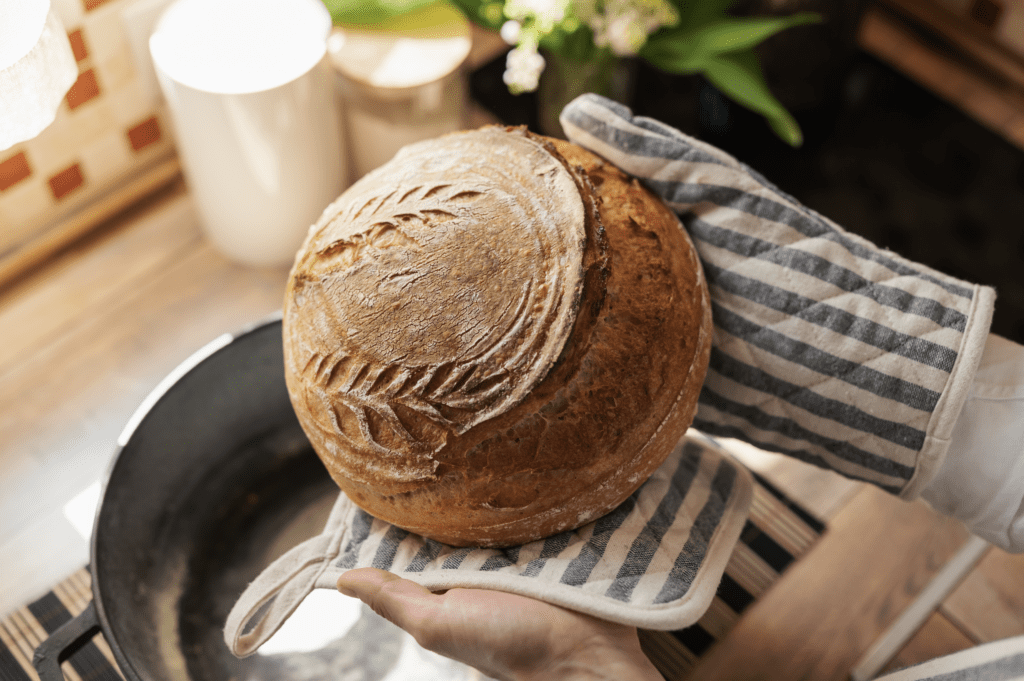Baking sourdough bread at home has become a beloved culinary pursuit, allowing individuals to experience the art and science behind creating their delicious loaves. While the process entails careful handling of the dough and precise fermentation, there is one technique that can elevate your homemade sourdough to new heights: adding ice cubes to your Dutch oven. This seemingly unconventional step can have a remarkable impact on the texture, flavor, and overall quality of your bread. Let’s delve deeper into the benefits of incorporating ice cubes into your sourdough baking routine.
Improved Oven Spring
The addition of ice cubes to your Dutch oven when baking sourdough bread creates a steamy environment that mimics professional bread ovens. As the preheated Dutch oven encounters the sudden burst of heat, the ice cubes release moisture, generating steam within the closed container. This steam assists in creating the sought-after “oven spring,” where the dough experiences a quick and heightened rise. The steam helps develop a crisp and beautifully risen crust, resulting in an aesthetically pleasing loaf.
Crispy and Chewy Crust
The presence of steam during the initial stages of baking plays a crucial role in achieving a delightful crust. As the ice cubes melt, the released moisture settles on the surface of the dough. This moisture, combined with the intense heat within the Dutch oven, promotes the caramelization process known as the Maillard reaction. The result is a thin, crackly, and golden crust that offers both a satisfying crunch and a pleasant chewiness—characteristics often associated with artisanal bread.
Enhanced Moisture Retention
Maintaining moisture within the bread is essential for achieving an enjoyable texture. The steam generated by the ice cubes in the Dutch oven creates a humid environment that prevents the bread from drying out during the baking process. This additional moisture helps the dough retain its internal moisture, resulting in a tender and moist crumb. The contrast between the crust’s crispy exterior and the soft, moist interior creates a harmonious balance that contributes to an exceptional eating experience.
Improved Flavor Development
The presence of steam not only impacts the texture but also enhances the flavor of your sourdough bread. As the ice cubes melt, the water vapor permeates the dough, carrying with it the distinct flavors of the fermented grains. This infusion of moisture helps unlock and intensify the complex flavors trapped within the dough, resulting in a more pronounced and well-rounded taste profile. Each bite becomes a sensorial journey, showcasing the depth and nuances of your homemade bread.
Consistent Baking Results
Baking sourdough bread can be a delicate process, influenced by factors such as oven temperature, timing, and dough hydration. However, incorporating ice cubes into your Dutch oven creates a controlled environment that promotes more consistent baking outcomes. The steam generated by the melting ice cubes helps regulate the heat distribution within the Dutch oven, ensuring a more uniform and predictable rise. This allows you to achieve consistent results, giving you the confidence to create bakery-worthy loaves time and time again.
Incorporating ice cubes into your Dutch oven when baking sourdough bread can significantly enhance the quality and enjoyment of your homemade loaves. The steam generated by the melting ice cubes creates a steamy environment that promotes improved oven spring, a crispy and chewy crust, enhanced moisture retention, intensified flavor development, and consistent baking results. By harnessing the power of this simple yet effective technique, you can unlock the full potential of your artisanal bread right in your own kitchen. So, the next time you embark on your sourdough baking adventure, don’t hesitate to add ice cubes to your Dutch oven and witness the remarkable transformation of your bread.





















